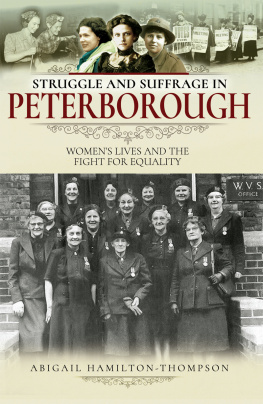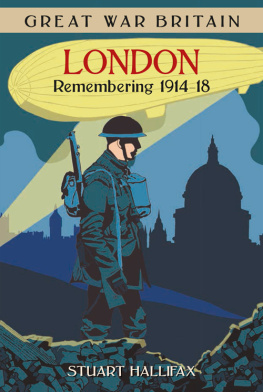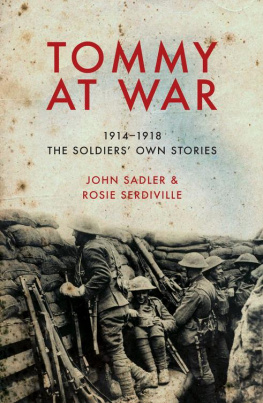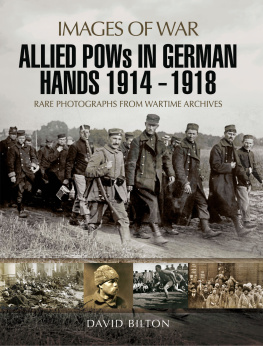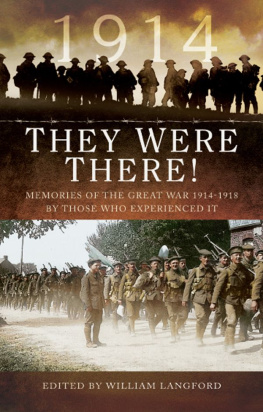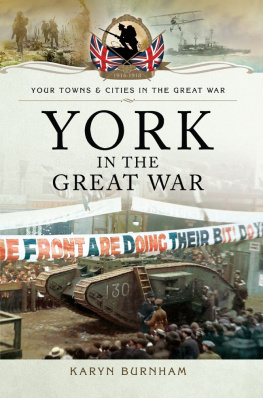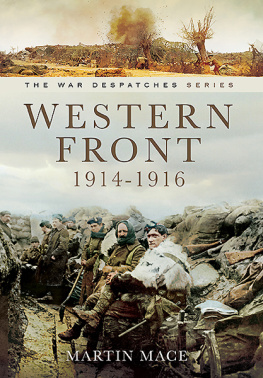Peterborough in the Great War
Peterborough in the Great War
Abigail Hamilton-Thompson
First published in Great Britain in 2019
by Pen & Sword Military
An imprint of
Pen & Sword Books Limited
Yorkshire - Philadelphia
Copyright Abigail Hamilton-Thompson, 2019
ISBN 978 1 47386 0 124
eISBN 978 1 47386 0 148
Mobi ISBN 978 1 47386 0 131
The right of Abigail Hamilton-Thompson to be identified as
Author of this work has been asserted by her in accordance
with the Copyright, Designs and Patents Act 1988.
A CIP catalogue record for this book is available from the British Library
All rights reserved. No part of this book may be reproduced or
transmitted in any form or by any means, electronic or mechanical
including photocopying, recording or by any information storage and
retrieval system, without permission from the Publisher in writing.
Pen & Sword Books Limited incorporates the imprints of Atlas,
Archaeology, Aviation, Discovery, Family History, Fiction, History, Maritime,
Military, Military Classics, Politics, Select, Transport, True Crime, Air World,
Frontline Publishing, Leo Cooper, Remember When, Seaforth Publishing,
The Praetorian Press, Wharncliffe Local History, Wharncliffe Transport,
Wharncliffe True Crime and White Owl.
For a complete list of Pen & Sword titles please contact
PEN & SWORD BOOKS LIMITED
47 Church Street, Barnsley, South Yorkshire S70 2AS, United Kingdom
E-mail:
Website: www.pen-and-sword.co.uk
Or
PEN AND SWORD BOOKS
1950 Lawrence Rd, Havertown, PA 19083, USA
E-mail:
Website: www.penandswordbooks.com
To my dear husband and children, without whose
support this book would not have been possible.
Prologue: Peterborough pre-war
In 1774, Peterborough was described as the smallest city in England by The Gentlemans Magazine as the ward had a population of less than 3,000. There had been little growth or expansion of the city as the boundaries were not dissimilar to that of twelfth-century Peterborough. Famous people linked to the city include Mary Queen of Scots and Catherine of Aragon who are both buried here.
Not far from Peterborough, in 1797, the Norman Cross Prisoner of War camp opened, the first of its kind in the world. The war with France necessitated prisoner of war camps to be built, and Norman Cross, near Yaxley, was chosen as one such site. Prisoners were captured from ships and became the responsibility of the Royal Navy. Before long, prisons on land and at sea became full, so a site was chosen which was far enough from the sea to make escape difficult. Norman Cross was designed to be the most humane prison around. At its peak, the camp housed over 5,000 prisoners, twice the size of the nearby city! This benefited the local area economically, as the guards, and prisoners on parole, were allowed out to Peterborough on day release. Additionally, the prisoners were fed on locally sourced fresh food as part of an arrangement between the British and the French governments. Any prisoners who seriously breached discipline were placed into the Black Hole, a cell block with no windows, and chained.
Disease spread quickly through Norman Cross due to the large numbers of people in close quarters. The main sicknesses were pneumonia and consumption, and a typhus epidemic broke out during 1800 to 1801. The typhus epidemic meant that a special cemetery had to be built outside the prison grounds which accommodated over 1,000 victims who succumbed to the disease.
Many prisoners residing in Norman Cross crafted beautiful intricate models carved out of animal bone to supplement their income, and were allowed to sell them at public markets. Some of these models are on show at Peterborough Museum. The prison was closed in June 1814 but several prisoners stayed on in the locality. A memorial was later erected to commemorate those that had died at the site.
The Peterborough Yeomanry cavalry, after Norman Cross was closed, gave the remaining funds from the prisoner of war camp to set up a public dispensary in Peterborough which opened in Cowgate in 1821. To be seen by either the resident Dr Pope, Dr Fenwick Skrimshire, or the visiting surgeon Thomas Walker, you had to have a letter of recommendation from a member of the board of governors. Churches and workers organisations helped raise money towards the infirmary which relied heavily on donations. In 1856 Earl Fitzwilliam donated his town house in Priestgate to be used as a hospital; thirty years later an operating theatre was added. The hospital was the first outside London to use X-rays, in 1896. The hospital secretary, Alfred Taylor, constructed his own X-ray machine but sadly died because of his work the dangers of using nuclear technology were not understood back then. Today the hospital is the citys museum and you can see the original operating theatre as it would have looked in the 1890s.
The New Poor Law was passed in 1834, replacing the previous legislation which dated from Elizabethan times. The update was much needed thanks to growing populations; people were beginning to resent the expense of helping the poor, whom they often saw as idle. Parishes were now grouping together and were ordered to share workhouses, to provide those in need with accommodation and work. Admitting yourself to a workhouse was very much a last resort for any person. Upon entry each person was stripped of their own clothes, checked for infectious diseases, washed, issued workhouse clothes, and allocated a set diet. The register for this newly erected Union Workhouse showed that most of the adults who entered the workhouse gave their occupation as agricultural worker, which indicated that the city was changing from an agricultural market town to an industrial town. The Board of Guardians in Peterborough (forty-five in number, each representing individual parishes) was set up in 1835 to find suitable premises as the existing institutions, run by feoffees, were not suitable and so a new Union Workhouse, based on the popular cruciform layout, was built in Thorpe Road to accommodate 200 inmates. It included an infirmary block, to which further wards were added later, and a chapel. The former workhouse site later became Peterborough District Hospital.
City Infirmary pictured in 1910.
Peterborough holds the distinction of being the last city in Britain where you could be carried around in a sedan chair. However, the first railway line came to Peterborough in 1845, from Northampton, a second line to Boston followed in 1847, and then the most important line, from London, in 1850, which transformed the city from a market town into an industrial hub. All three railway companies built engine sheds here in Peterborough and their staff resided in the city. Finally the city began to expand from the stagnant twelfth-century plan, with properties being built alongside the railway lines. By 1861 the citys population had grown to almost 12,000.


